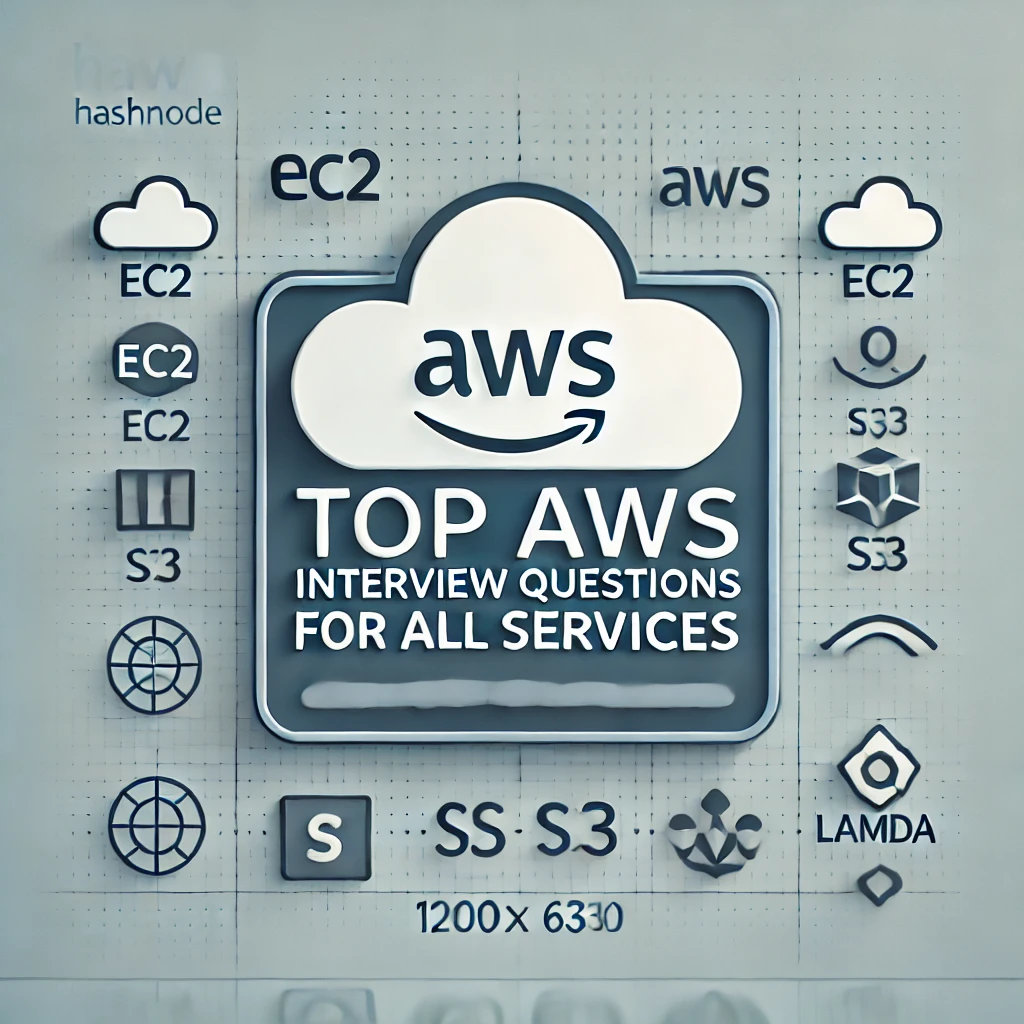Aws Interview Questions - ( For All Services )
 ALI MASIU ZAMA
ALI MASIU ZAMA
1. General AWS Basics
What is AWS, and why do companies use it?
Can you explain the difference between Regio
ns and Availability Zones in AWS?
What are Edge Locations, and why are they important for AWS services?
How do Reserved Instances differ from On-Demand and Spot Instances?
Explain AWS Shared Responsibility Model and its importance in cloud security.
What is the AWS Free Tier, and how can it be leveraged?
2. Compute Services (EC2, Lambda, ECS, EKS)
Describe the main differences between EC2 and Lambda.
What are some ways to reduce costs associated with EC2?
How would you decide between using ECS (Elastic Container Service) and EKS (Elastic Kubernetes Service)?
What is an EC2 Auto Scaling Group, and how does it improve fault tolerance?
Explain how you can use Lambda for serverless computing in AWS.
Describe how Lambda’s pricing model works. How is it different from EC2’s?
What are Fargate tasks in ECS, and when would you use them?
3. Storage Services (S3, EBS, EFS, Glacier)
What are the key differences between S3, EBS, and EFS?
How does S3 lifecycle policy work, and why would you use it?
Explain the S3 storage classes and when to use each.
What are some use cases for Amazon Glacier?
Describe S3 bucket versioning and why it’s important.
How can you secure S3 buckets to prevent unauthorized access?
What are some benefits of EBS over local storage?
4. Database Services (RDS, DynamoDB, Redshift, Aurora)
Compare and contrast RDS and DynamoDB.
What is the difference between RDS Multi-AZ and Read Replicas?
When would you use DynamoDB over RDS?
Explain the use cases for Amazon Redshift.
What are the primary benefits of using Aurora compared to standard MySQL or PostgreSQL on RDS?
What is DynamoDB Streams, and how does it work?
Describe Amazon Aurora Serverless and when it is beneficial.
5. Networking & Content Delivery (VPC, CloudFront, Route 53)
Describe the main components of an Amazon VPC.
How does an internet gateway differ from a NAT gateway?
What are some ways to secure a VPC?
Explain the differences between Route 53 routing policies.
Describe CloudFront and how it speeds up content delivery.
What is an Elastic Load Balancer, and what types of load balancers does AWS offer?
How can you use VPC peering to connect multiple VPCs?
6. Developer Tools (CodeBuild, CodeDeploy, CodePipeline)
Explain how AWS CodePipeline helps in CI/CD processes.
What is CodeBuild, and how does it differ from other build tools?
Describe the workflow of AWS CodeDeploy and how it manages deployments.
How does CodeCommit compare to other version control systems like GitHub or Bitbucket?
How can you automate deployments with CodePipeline and Lambda?
Explain how AWS X-Ray can help with application debugging and monitoring.
7. Security, Identity, and Compliance (IAM, KMS, CloudTrail)
What is IAM, and why is it critical to AWS security?
Explain the concept of IAM roles and policies.
How does AWS Key Management Service (KMS) enhance security?
What is AWS CloudTrail, and how is it useful for security and compliance?
Describe Multi-Factor Authentication (MFA) and its importance in AWS.
What are Security Groups, and how do they differ from NACLs (Network ACLs)?
How would you set up cross-account access in AWS?
8. Machine Learning (SageMaker, Rekognition, Translate)
What is Amazon SageMaker, and how does it simplify machine learning?
How does Rekognition help with image and video analysis?
Describe some use cases for Amazon Translate.
Explain the concept of a SageMaker notebook instance and its use.
What is SageMaker Ground Truth, and how does it help with data labeling?
How can you use SageMaker to train and deploy a machine learning model?
9. Analytics (Athena, Kinesis, EMR, QuickSight)
What is Amazon Athena, and how does it make querying data easier?
Explain how Amazon Kinesis works and some of its use cases.
Compare Amazon EMR with standard Hadoop deployment.
How does QuickSight help with business intelligence and analytics?
What is the purpose of AWS Glue, and how does it simplify ETL processes?
Describe a scenario where you would use Amazon Redshift Spectrum.
10. Migration & Hybrid Architecture (DMS, Snowball, Outposts)
What is AWS Database Migration Service (DMS), and how does it simplify database migrations?
Describe the use cases for AWS Snowball.
How does AWS Outposts enable hybrid cloud solutions?
What are some benefits of using AWS Direct Connect?
How does the AWS Migration Hub help in migrating resources to AWS?
Explain the steps involved in migrating a large on-premises database to AWS.
11. Cost Optimization & Management (Cost Explorer, Budgets, Trusted Advisor)
How does AWS Cost Explorer help with cost management?
What are AWS Budgets, and how can they assist in financial planning?
Explain the AWS Trusted Advisor and its key features.
Describe how you would optimize costs in AWS.
What are Savings Plans, and how do they differ from Reserved Instances?
12. IoT and Edge Services (IoT Core, Greengrass)
What is AWS IoT Core, and what are some of its applications?
How does AWS Greengrass help in edge computing?
Explain the benefits of using IoT Analytics in AWS.
Describe how device management works with AWS IoT Core.
Subscribe to my newsletter
Read articles from ALI MASIU ZAMA directly inside your inbox. Subscribe to the newsletter, and don't miss out.
Written by

ALI MASIU ZAMA
ALI MASIU ZAMA
🚀 𝐀𝐛𝐨𝐮𝐭 𝐌𝐞 "Hi, I'm Ali masiu zama, a DevOps student passionate about cloud computing and automation. I'm currently learning AWS, Linux, Docker, and CI/CD pipelines, with a focus on automating workflows and building scalable solutions. My goal is to become a skilled DevOps engineer, and I'm excited to share my learning journey and projects with the community."